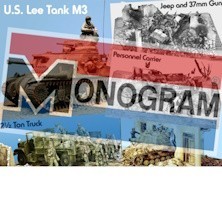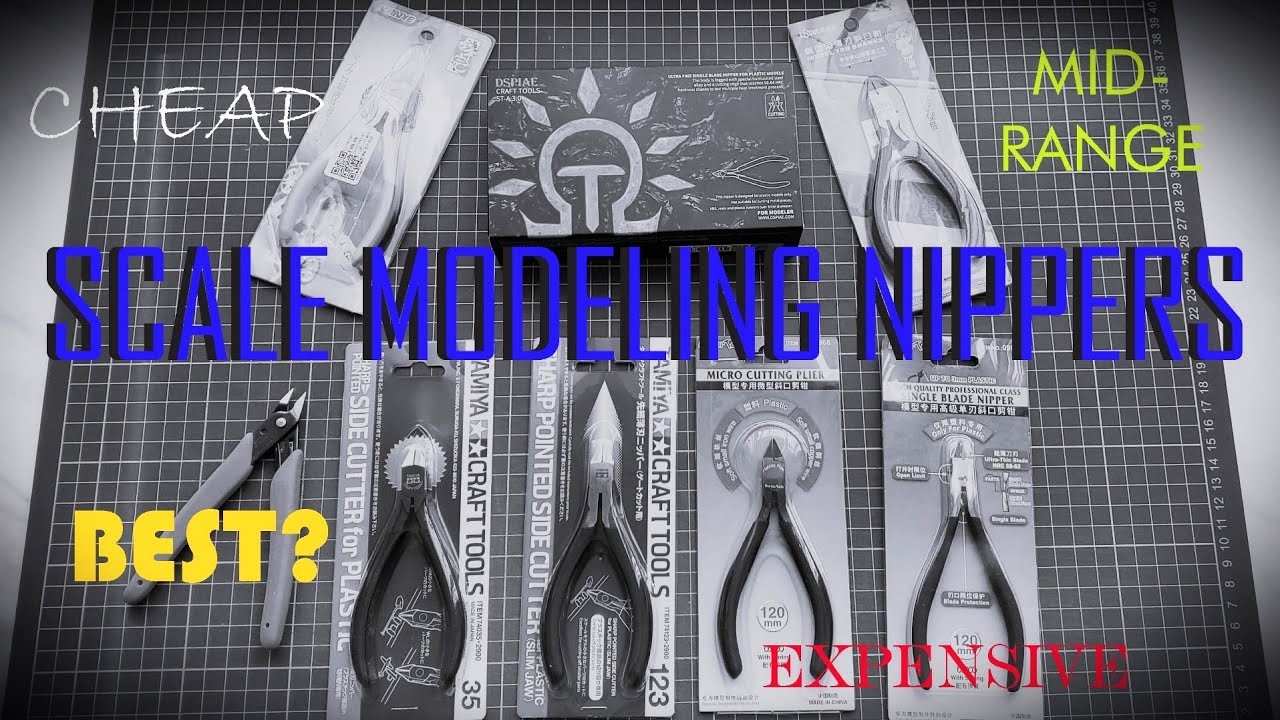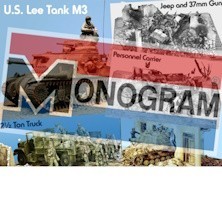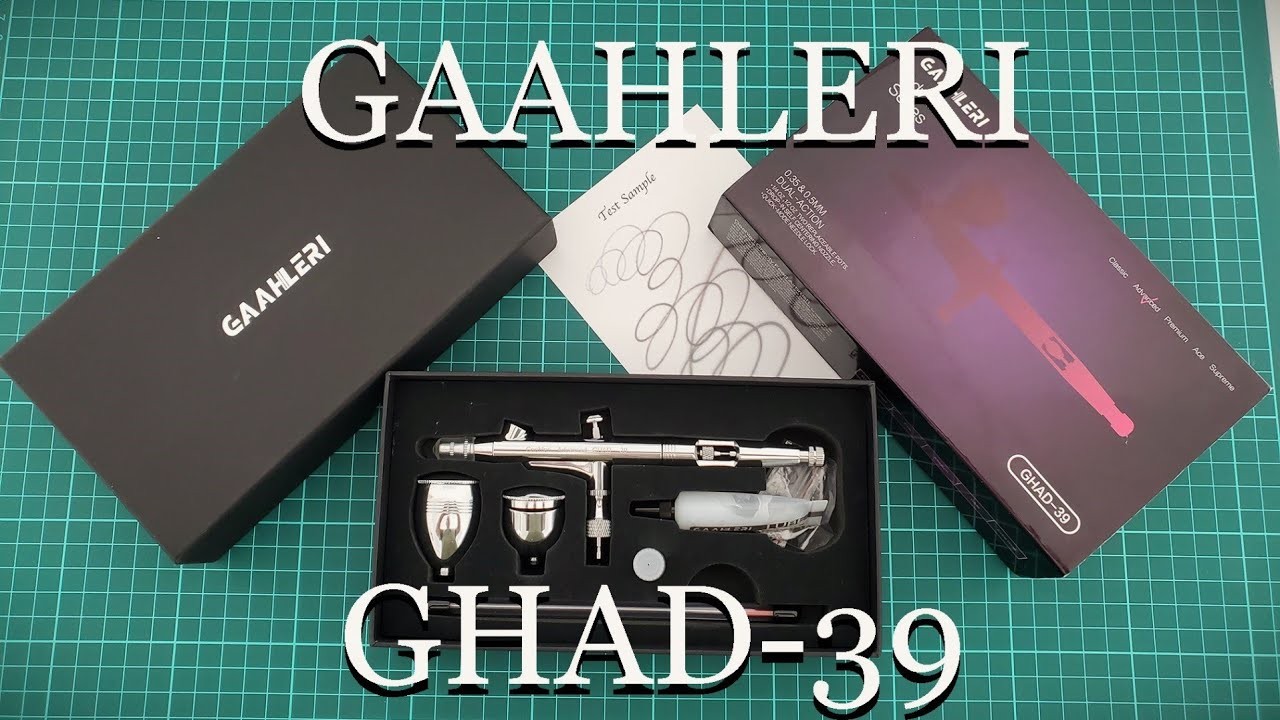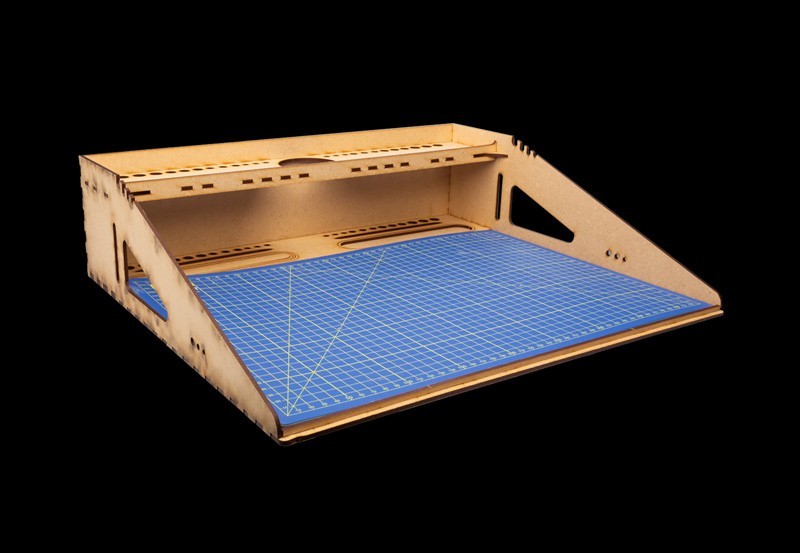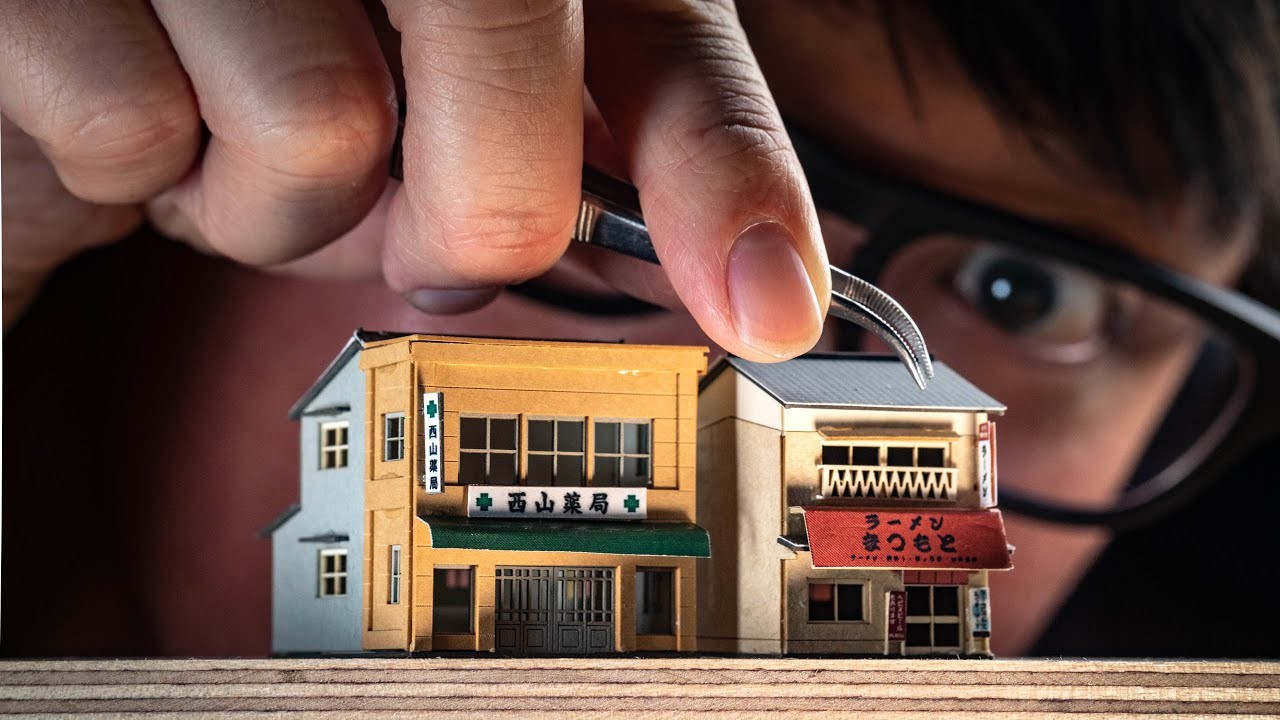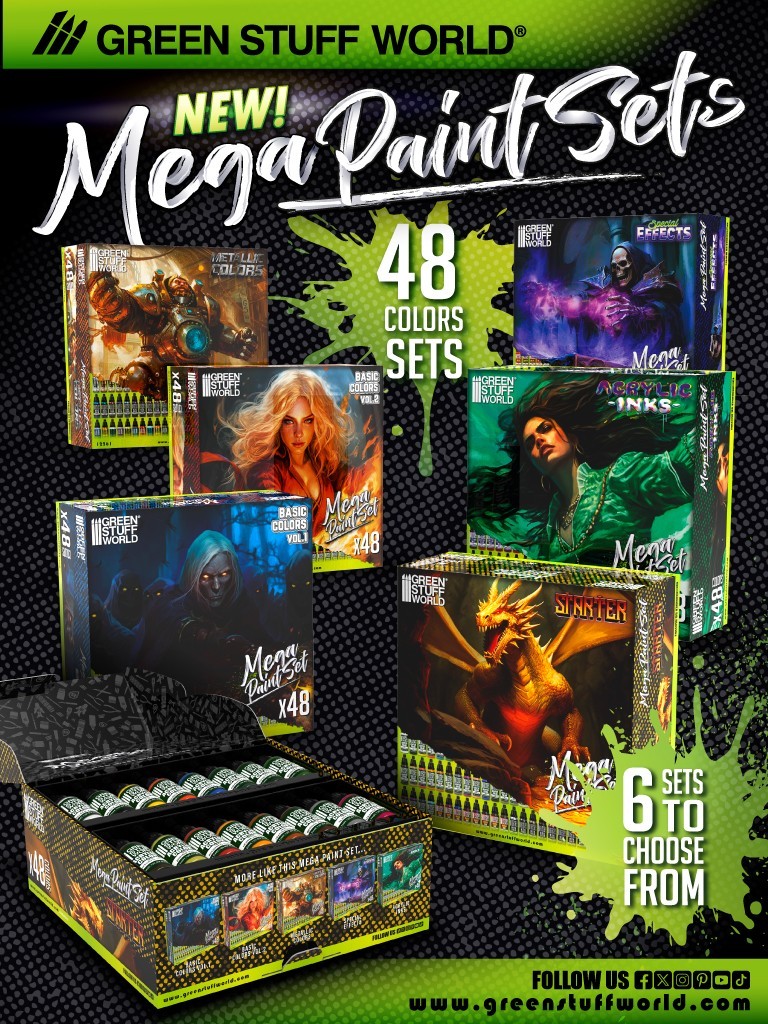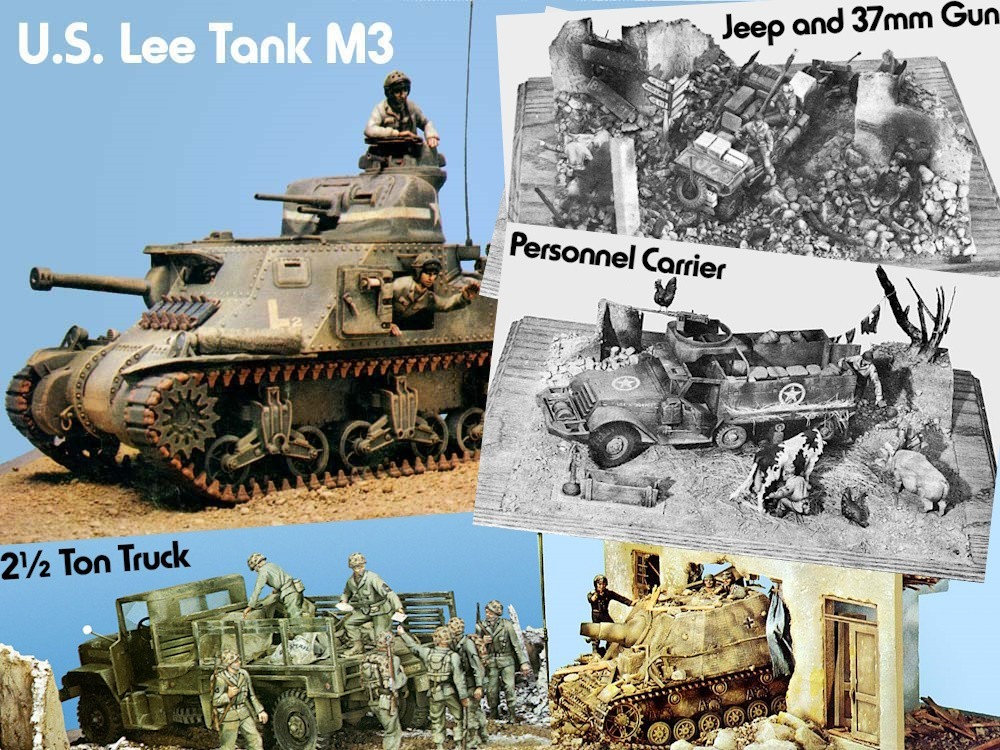
Monogram Models Diorama Sheets
A few years ago, I was lucky to make the acquaintance of Mr. Robert Johnson III, who was with Monogram Models from 1973 into the 1990s. He started as a junior draftsman and worked his way into the planning and decision-making realm. You can read a fuller bio of him in the feature :
Creating a Model: Concept to Finished Model, Part 1
"Bob" has shared some fascinating stories of the hobby history, including how Lockheed's Kelly Johnson allowed Monogram into the Skunk Works to create the most accurate SR-71 of the era, what happened to Aurora molds and tooling, industry finances, and other "peaks behind the curtain." Some of those stories have been posted and all are amazing stories. The following is an insider's story about the famous Shep Paine and his work with Monogram to create those legendary diorama brochures which Monogram included with many of their kits in the 1970s.
Some examples
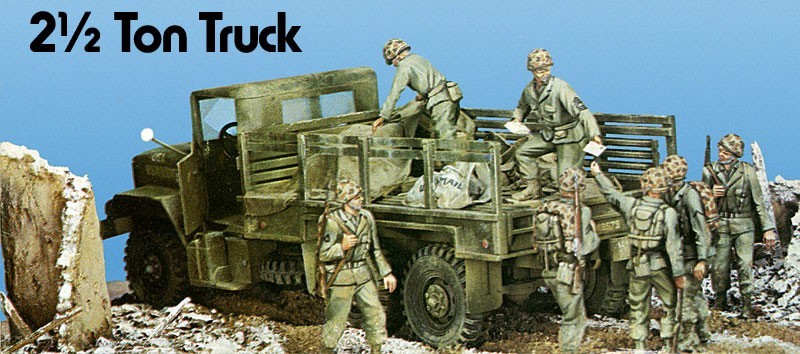
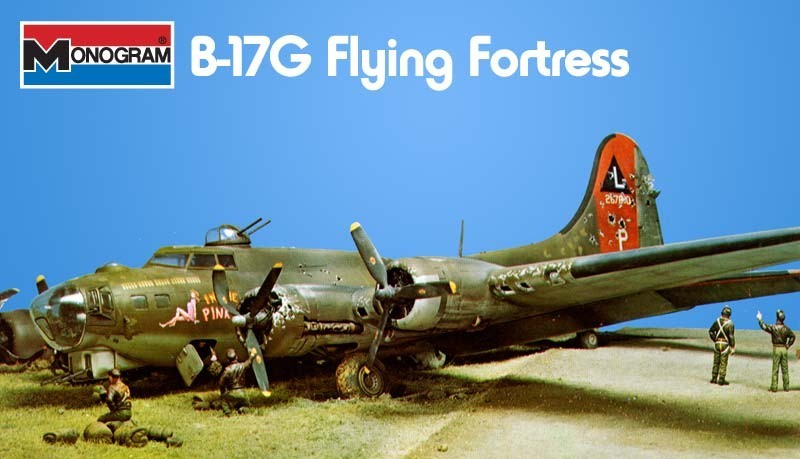
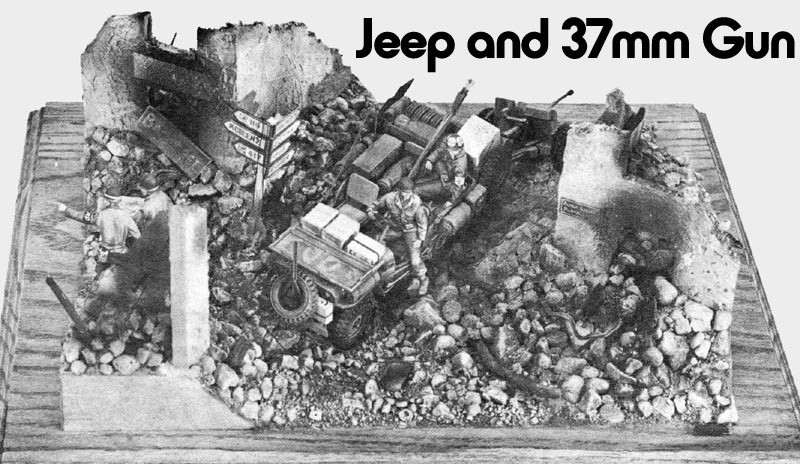
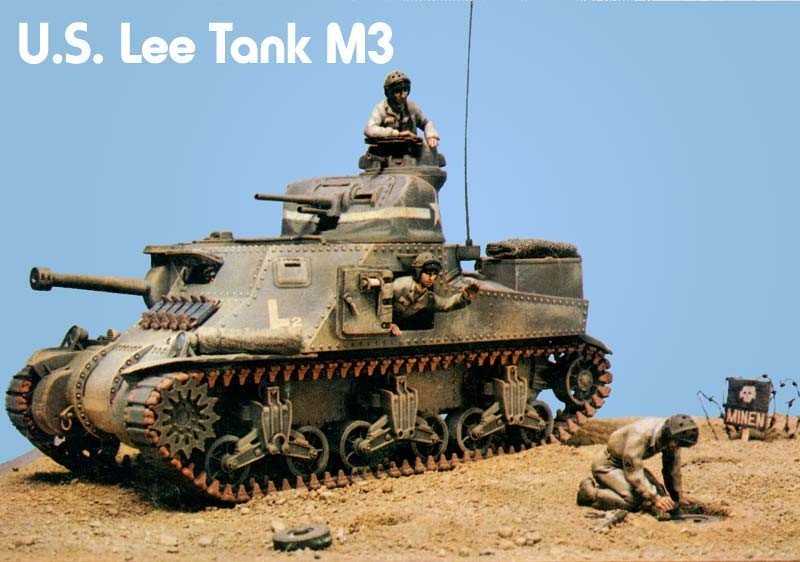
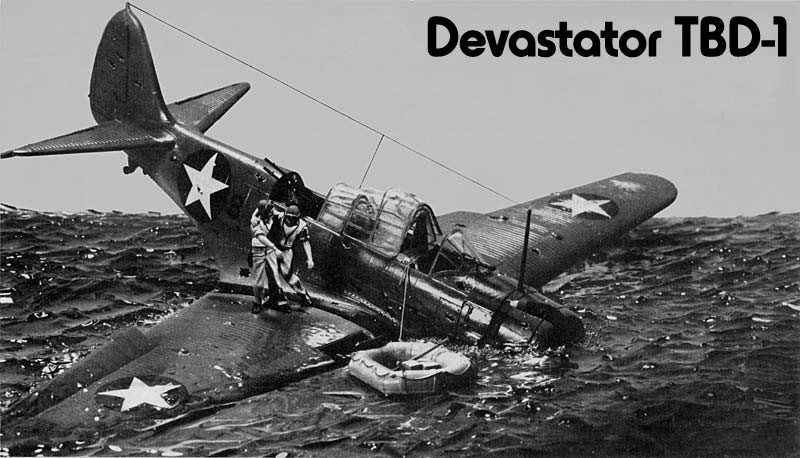
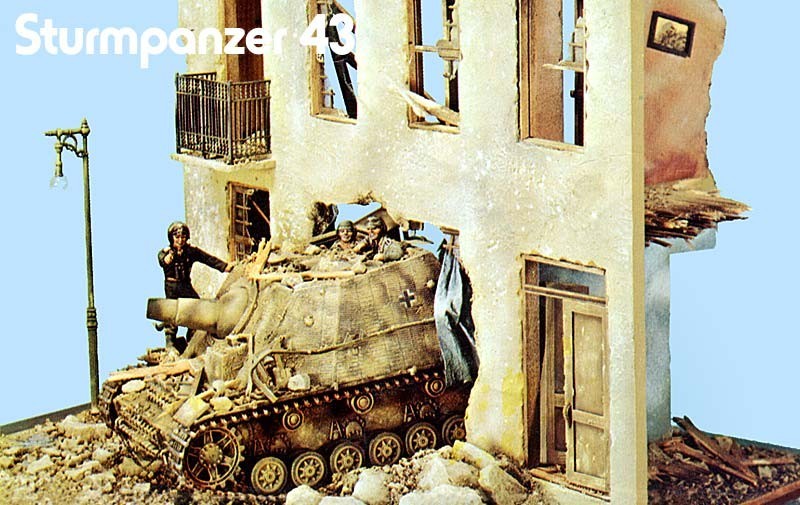
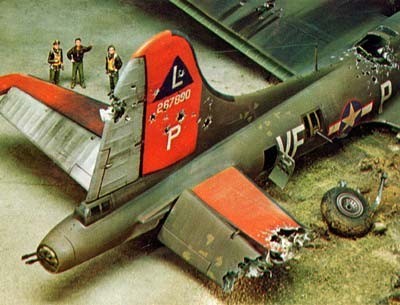
Diorama sheets developed for specific Monogram model kits from 1972 - 1979
Based on data posted on "[email protected].
Year of issue__Kit No.__Subject__Comments
1972 8211 - Jeep & 37mm Gun, black & white format
1972 8212 - Amphibious Weasel, color main image
1972 8214 - 2 1/2-Ton Truck 6X6 Cargo Carrier, color main image
1972 8215 - Armored Half-Track, color main image
1972 8216 - Personnel Carrier, black & white format
1972 8217 - Patton Tank, black & white format
1972 8218 - Panzerkampfwagen Sd.Kfz. 161, b & w format
1972 8219 - Flakpanzer Tank, black & white format
1972 8220 - Sturmgeschuetz IV, black & white format
1973 7505 - Panzerjager IV, color - New kit release
1973 7506 - Sturmpanzer 43, color - New kit release
1973 7535 - British Grant Tank M3, color - New kit release
1973 7536 - US Lee Tank M3, color - New kit release
1974 7546 - Black Widow P-61, color - New kit release
1974 7575 - Devastator TBD-1, b & w - New kit release
1974 7580 - F-15 Eagle, b & w - New kit release
1974 7581 - Panzerspahwagen Sd. Sfz. 242, Color - New kit release
1974 7582 - Ostwind Flakpanzer, color - New kit release
1974 7538 - Dornier DO335 Arrow, b & w - New kit release
1975 4200 - Screamin' Mimi, color - New kit release
1975 4201 - Sherman M4A3, color - New kit release
1975 5600 - B-17G Flying Fortress, color - New kit release
1976 5601 - B-24J Liberator, color - New kit release
1977 5700 - Boeing B-29 Superfortress, color - New kit release
1977 5500 - B-25 Mitchell, color - New kit release
1978 5603 - C-47 Skytrain, color - New Kit release
1978 5502 - B-26 Marauder, completed, but not printed. Placed in Scale Modeler magazine
Something more than "just a model..."
During the 1970's, a very small team of creative people within Monogram
Models worked with famed military miniaturist Shepherd Paine to create
instructional sheets into new armor and aircraft hobby kit releases that
challenged builders to "go beyond simply building a specific kit" and find
new ways to display his completed replica. While it remains difficult to
quantify the impact of the Monogram diorama sheets, they have become
legendary in the past history of the company. In 2000, Bob Reder wrote in
his book A Brief History of Monogram Models, "Many model builders
would like to display their "finished works of art" in a natural or realistic
setting. At that time ( 1970 - 1971), few had any idea of just how to get
started. To expand their knowledge, Monogram commissioned Shepherd
Paine, a noted historian, expert modeler and builder of military miniature
figures to prepare diorama instructions."
As time has passed and no one wrote down precisely how this plan was
transformed from an idea into reality, my thoughts on the genesis of these
creations are based on my knowledge of Bob Reder and Shep and from
working with each of them creating the later diorama sheets from 1975
through 1978. Monogram senior management was always seeking
innovative ways to promote modeling and encourage the pastime of
building scale model dioramas. Bob Reder was a truly dedicated
enthusiast of all things mechanical. Despite his age and snow-white hair,
he was a "kid at heart"! I do not know how Bob and Shep Paine connected,
but, Shep was well-known for his creative abilities in the military miniature
field and Reder recognized folks with capability and skills.
Addendum: 19 August 2022
With so few of the 1970's Monogram "family" alive, I had decided that
whatever the connection was that introduced Shep Paine to Bob Reder, I
would not discover it. During my "early days" at Monogram, I had heard
that Art Neckermann of Valiant Enterprises had handled the production of a
little-known series of 54mm metal figures known as "Merite". I learned that
Mario Falconi had been the "figure model" wearing various uniforms and
costumes so that "pose photos" could be taken. But, Mario did not have
the answers I was seeking. I also contacted the "current" Valiant Corps
Miniatures and the person I traded emails with had no idea about Shep
Paine...
A recent book published about Shep Paine’s creative work provides the
answer. Tasked with developing a series of Diorama Sheets that would
spur modelers into “going further” than just building an armor and aircraft
model, Syl Wisniewski visited the “The Hobby Chest” located in Skokie,
Illinois. It was located on the lower level of an old apartment building just
south of Dempster Avenue and just East of the Edens Expressway. Some
years later, I visited that shop and found it to be a real metting place for
miniature figure builders. The owner drove a 1971 VW “THING” painted to
look like a WWII VW in Afrika Corps colors. True modeler sense of humor.
From the development of the first Monogram Diorama Sheet in 1972 , for
kit no. 8211 / Jeep & 37MM Gun, to the last, kit no. 5501 / B-26 "Marauder",
27 layouts were developed; 26 were printed for insertion into production
kits, and the last, the B-26, debuted in Scale Modeler magazine. The last
diorama constructed depicted the B-26 "Marauder" assembly line at the
Glenn L. Martin plant in Middle River, Maryland. Shep located unique "front
surface" mirrors at the American Science Center on Northwest Highway in
Chicago. Two of these reflected images of one nearly-assembled B-26 and
created an endless scene. By 1978, costs were rising and a printed
diorama sheet four-color printed on one large format 11" X 17" sheet had
risen to $ .09 cost... this would equate to a retail cost of about $ .27.
Choices were limited to reduce decal sheet size, reduce plan size, or
eliminate the diorama sheet. Tom Gannon delegated that decision to me.
Costing decisions had been my baileywick since 1974, so not including the
diorama sheet was the best decision. A connection with Lloyd Jones in
California enabled the text and photos to be offered to Ed Schnepf at
Scale Modeler who agreed to print it.
As time has passed, it has become an "urban legend" that Shep created
the dioramas and the sheets in total, but, that was not true. His
contribution was the major part in the success of these promotional items
and he should be remembered for introducing countless builders to the
world of creating military and aviation dioramas. In fact, the process of
developing the "final product" that was printed diorama sheets was
handled by two people when the process began in 1972 and continued
through 1978 when the last diorama sheet art was created.
Shep Paine was responsible for creating and building the diorama.
Usually, that process did not begin until after Shep had assembled a "quick
build" representative model to determine the length and width of the
diorama base and what additional objects and figures would be included
and where they would be positioned. After that initial meeting, Shep would
assemble and finish the models, alter figures and paint as needed, take "in
process" photos in black & white, and create the diorama base. Upon
completion, he would write a summary for the body text and call Bob or Syl
for pickup. One of my duties beginning in mid-1974 was to drive to Shep's
apartment and deliver his work to Monogram. That was my introduction to
Shepherd Paine; a fascinating fellow of extraordinary modeling and
creative skills, a true "history sponge", and a sharp, yet, dry sense of
humor often seen in his diorama and figure work...if you knew where to
look for it.
It was my belief in late 2019 that Monogram photographer Jerry Humbert
and I may be the two Monogram employees still "in this world" who had a
hand in the diorama sheet creative process and we came in "late in the
game". However, I recently learned Gerry left this world in 2017. His sense
of humor will never be forgotten. Procrastinating about capturing these
memories means that fellows who had a hand in this process are no longer
"of this world". Today, more than 45 years after the fact, I am amazed how
these small number of printed "ideas" are valued and continue to inspire
modelers; particularly "us old guys" who enjoy and understand history!
When I first began working in the Engineering Department, Roger Harney
had been elevated from Manager of the Model Shop to the position of
Director of Engineering in 1970. He had succeeded Sylvester Wisniewski
who had filled that position since the early 1950's and had worked at Comet
Models with Bob Reder designing free-flite models. Syl was quite adept at
flying model kit design as was Reder, Sid Axelrod (Top-Flite), Carl
Goldberg (Carl Goldberg), and Al Horback (Monogram). At the time that
Roger succeeded Syl, Sylvester was given the title of "Director of Special
Projects". Though he never said anything negative about that change, I
believed that he was not pleased, but, Roger was Bob Reder's "fair-haired
boy", and Syl diligently embraced his altered future focusing on a well-
engineered series of EPS foam rubber-powered aircraft that renewed the
"Speedee Bilt" brand!
Though I had never totaled the number of Diorama Sheets that were
created or listed the dates they first appeared, doing so enabled me to
understand why Syl was really tired of having anything to do with creating
diorama sheets. He was limited to one page black & white sheets for
existing items such as the existing armor item that debuted in 1972 and
1973 and new items like the 7575 / Devastator TBD-1 and 7580 / F-15
"Eagle". The first color sheet was the P-61 "Black Widow". In all, he
worked with Shep Paine to create 16 individual sheets; many one page and
in black and white. If the “heart” of creating these Diorama Sheets was
Shep Paine, the “soul” was Sylvester Wisniewski!
I had not worked at Monogram very long in 1974, but, had taken on the
"additional duty" of writing the short texts for the instruction sheets. I liked
that duty as I looked upon it as a way to introduce a builder to the history
of the kit he had purchased. My "guide" was simply to provide basic data
in an interesting manner. I happened to see the F-15 "Eagle" sheet after it
was printed and commented to Roger that if we were going to do creative
pieces like this, we should at least be technically correct. Roger
questioned what I meant and I told him that Shep's diorama depicted a
ground crew member with a ground cord cable in his hand walking toward
the aircraft. TOTALLY wrong in terms on U.S.A.F. Tech Order procedure!
Doing the way shown, ground point-to-aircraft was an excellent way to
create a spark between the aircraft and the ground cord, and potentially
cause an explosion. Shortly thereafter, I began work with Syl doing the
actual paste-up layouts and writing caption text. By that time, working with
Shep, Syl had created 15 specific diorama sheets in 3 years; an amazing
achievement! It clearly explained why the sheets were so "cookie cutter" in
layout and execution.
After the P-61 Sheet was complete, Roger asked me to take over the
responsibility for creating new diorama sheets. I began meeting with Shep
at Monogram and including the kit designer to go over test shot parts that
were typically used for creating new diorama sheets. Perhaps, not as
important on the armor items like the Ostwind conversion and the
Panzerspahwagen that Bill Koster created, but, crucial as we moved into
the large 1/48th scale aircraft such as the Boeing B-17G and Consolidated
B-24J.
By late 1974, the market was changing. The "Gas Crisis" of 1973 had a
major impact on everyday life and business. The hobby kit and toy
business were very reliant on baseline plastic like polystyrene and as
prices per pound increased dramatically, access to "quality" styrene
became quite challenging. A number of firms that were extruding and
selling Polystyrene plastic pellets found a unique way to extend their profit
margins by adding ground calcium carbonate to the medium impact natural
(milky-colored) plastic and then extruding it into various colors. The
calcium carbonate was literally ground marble and as the percentage
increased, it was no longer possible for "glue".. liquid or tube solvent.. to
effectively "melt" the plastic so that it would bond together. This was a
constant problem for our purchasing agent and molding.
The creation of the two diorama sheets associated with the new Sherman
tank kits, Nos. 4200 and 4201, posed no major challenges. Sylvester was a
good mentor, but, his heart was into a new EPS Foam "SpeeDee Bilt"
airplane project. Working with Shep under Bob Reder's guidance, Shep
was encouraged to explore different ways to add interest by adding plastic
armor panels, modifying the suspension systems, and adding exterior
details to the tank hull. That required additional space for detail photos that
Shep photographed as he built the models for the dioramas and more text
to explain those steps. Since the concept of the diorama sheets was
"Reder's baby", he monitored our steps quite closely. That was very
welcome as he had a great deal of knowledge about the market and we
were exploring new ideas that would increase interest and sales...even if
that increase was hard to gauge.
The entire 5600 1/48th B-17G "Flying Fortress" was a totally different
challenge. It would be the largest aircraft model kit developed by
Monogram Models since the 1/72nd scale Boeing B-52D in 1968. It would
also be the largest 1/48th scale aircraft model kit ever created. In
retrospect nearly 50 years later, it was a "Slam dunk", but, it was not
perceived that way in the Spring of 1974 when the project was debated at
length and seen as a very significant gamble. The V.P. of Marketing, David
Wayne, had worked as a Mattel salesman and had that degree of "daring
do" that characterizes successful toy salesmen who have to be risk takers...
like Felix Sabates marketing Teddy Ruxpin. Dave believed he could create
a lot of "spin" to place a large item (in box size) with mass merchant
customers as Christmas gifts for 1975. While that sounded "great", it
would totally change the logistics of manufacturing and shipping.
These large-scale aircraft projects provided a new promotional item for
mass-merchant customers like K-Mart, Toy-R-Us, and smaller chain stores
to use as Christmas gift items. In order to meet these large volume
production numbers, the molds had to be ready for production molding by
the third week of July with initial shipments to mass merchant customers
taking place at the end of September, and this schedule placed a direct
impact on the development of the associated Diorama Sheet.
Design began in the late Spring of 1974 and progressed in the typical
Monogram manner with three engineers working on part drawings; George
Baskys managing the project and drawing large parts like the fuselage
halves, and wing tops and bottoms; Mario Falconi drawing the interior floor
and bulkhead structures, and me, doing small parts... guns, turrets, the
bomb cart and wheels, 750-pound bombs, and small interior parts. First
test shots were available in March of 1975 and Reder, Roger, and I met with
Shep to discuss ideas. We had four sets of "first test shot" parts trees for
him, but, only two clear trees as that mold had yet to have line details
added and the cavity and core polished to a 3000 Diamond mirror finish.
Shep was hyped about doing a crash scene somewhere in England in
1944. His ideas were to explore weathering techniques and ways to thin
down molded wings and stabilizer parts so that battle damaged surfaces
would appear more realistic. His goal to be complete was the first Monday
following July 4th of 1975. It was "Monogram tradition" to close down for
the first two weeks of July each year. The time was used to do needed
work on Monogram's ageing molding machines and packaging assembly
lines. That would change in 1978, but, the B-17G diorama presented Shep
with a deadline that was very dependent on the ability to supply him with
better clear parts... the clear nose of the B-17G was not to be one of those
"better parts" and Shep polished out the parts that he was given.. and they
did not have final part line detail. No one in the modeling world ever
noticed.
Well aware of the required annual two-week vacation each July, that
schedule had a negative impact on the creation, printing, and availability
of the Diorama sheet enclosure, so, my two-week vacation began on the
Thursday of the third week in June. Our two weeks were planned for my
folk's home on Lady's Island near Beaufort, SC and 1975 was our first
"road trip" with our new Capri II. This schedule allowed me to be back in
Illinois by the first Thursday in July and meeting with Shep to pickup his
completed diorama on Friday. These large dioramas just barely fit into the
Capri with the rear seat folded down.. I gave Shep a length and width that
was the maximum size that would fit in the Capri.. "gotta love hatchbacks"!
My work began when the fellows in plastics who were working on
machine maintenance would let me in through the side door in plastics. Hy
Shapiro had a key that would give me access to the offices and my
drawing board was the "new home " for the "year's new diorama".. the first
task was to read Shep's write-up detailing assembly and modifications that
he had incorporated. When we met at the time of pickup, an hour or so
committed to discussing each project was very beneficial. His black &
white sequence photos served as a starting point.. then studying the
diorama and determining angles that would portray the most interesting
details came next. Time in the photo studio using a Polaroid to shoot
various angles provided the images for the Company photographer; Dave
Dahm followed by Gerry, to use as a basis for 4" X 5" color transparencies
to be created. Captions were written for each photo... a short summary of
the "Building Notes" was "diorama specific". The main body text was
developed by Shep and Syl for the P-61 Black Widow and I adjusted this
text to fit the B-17G and subsequent dioramas... with more changes and
written creativity added with each passing year. While tasked with a tight
schedule, the simple fact that this became a "once a year" project enabled
it be challenging and "new". The "professional photos" would begin
on the first Friday in July, and the typed text would be sent out to the shop
that created formatted copy (before computerized text format) so that I
could have that back on the Monday or Tuesday of the second week in
July. While most employees were coming back with stories of their
vacation, my work area looked like a tornado passed through and I was
typically laying out the "Story Boards" so that the package could be
reviewed with the printer by the end of the week.
Monogram Kit 5501 - Martin B-26 "Marauder"
The final diorama sheet was planned for the B-26 "Marauder", kit number
5501. The B-26 kit was designed by Clark Macomber and I had found a
wealth of technical drawings in the lower level of the Middle River office
building of Glenn L. Martin Company. Shep was seeking a vignette totally
different than a flight line or damaged aircraft setting. He was fascinated by
a store on Northwest Highway in Chicago known as American Science
Center. The varied items within the store truly served to motivate Shep into
finding materials that could be adapted to his modeling work. In 1976,
when he was developing idea for the #5601 B-24J "Liberator" diorama, he
found a portable air compressor that harkened back to the 1950's and
perhaps earlier. It served as the basis for the air compressor used in the
"formating aircraft diorama" and he created it by heavily modifying an HO
scale farm tractor!
When we discussed his ideas for an assembly line of "Marauders", he
was enthused about finding "front surface mirrors"; glass with the silvering
on the front surface rather than the rear, thus, eliminating any gap caused
by the glass thickness. It was expensive for the time. Roger agreed to the
cost and Shep was really pleased. Once he knew the sizes, he had the
glass cut to the needed size.
By 1978, costs had risen for the ancillary items such as decal, assembly
plan, and the diorama sheet. Of course, there was a continual "battle" to
provide the best decal sheet possible even though a kit-supplied sheet
would never equal an aftermarket product. I met with Tom Gannon to
discuss the gross margins on several new kit projects and the only one
that did not meet expected numbers; the B-26. I advised Tom that this kit
had two parts molds with the fuselage halves in one mold and the wing
parts in the other.
This process took place each year through the B-24J "Liberator"(1976),
B-29 "Superfortress" (1977), C-47 "Dakota" (1978), B-25 "Mitchell" (1979)
and the B-26 "Marauder" (1979). Each was fun and challenging to do and
represented the best efforts of Shep Paine and fellows like Dave Daum and
Gerry Humbert. It was easy to believe that the dioramas were the "end
result", and "after the fact", they were displayed in various locations within
Monogram Models until some were given away and the balance, such as
the B-17G, B-24J, and B-29 were moved to the Hobbico offices. The true
"end product" was the printed sheets that have proven to be collectible and
are available online. Each was a work of very creative people: Shep Paine
above all others... Sylvester Wisniewksi...a "true pro".. Dave Dahm and
Gerry Humbert who brought Shep's work to countless modelers.. and
lastly, me. A really unique experience.
- RAJ3
A little more...
I meant to add a little more that Bob told me:
Bill Koster designed the Panzespahwagen, Ostwind conversion, and the M-8/M-20 armored cars. Mario Falconi created the two "Sherman" kits and I assisted him doing some of the part drawings.
Shep and Syl sure had their hands full creating 9 dioramas and sheet in about 3 months. At least Shep worked with actual production parts since the kits were re-releases from 8211 - 8217. Look at the Diorama Sheet for the B-17G, you will note that the clear nose part has NO ENGRAVING on the part!! It was a "first test shot" piece and often that complicated Shep's building!!
Monogram was in deep trouble in 1971.... Mattel bought Monogram in October/November of 1969 and immediately told Besser to disassociate Monogram from the Manufacturer's Rep. Group...independent sales reps across the country. The 'idea' of the Handlers was that Monogram could be sold to wholesale distributors by the internal Mattel sales force. That "concept" was deeply flawed. The Matterl sales people were SALARIED rather than working on commission and had no concept of model kits or the market. They also DID NOT call on hobby wholesale distributors. Monogram sales plummeted after the crash of slot car racing in 1968..... I am sure that the idea of Diorama Sheets came from Bob Reder in 1971, and the first 8 items were planned to be released in 1972.
That means that Shep's building and Syl's layout work had to be done during the last half of 1971.









